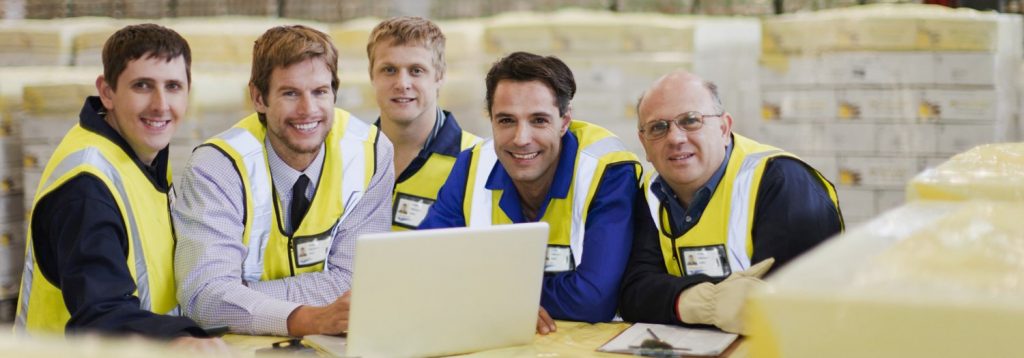The following article is inspired by the book, Developing Lean Leaders at All Levels, by Jeff Liker and George Trachilis.
The teaching objectives for this section are to:
- Review the Lean Leadership Development Model.
- Discuss the self-development learning cycles in more detail.
- Point out the triggers that tell you when you are ready for Hoshin Kanri.
CONTINUOUS IMPROVEMENT MUST HAPPEN WITHIN YOUR WORK GROUP
It’s worth taking a moment to review the model we have been discussing for over a year now.
We started with committing to self-development; and there are at least two parts to that topic, and they are how to do your job, and how to improve your job.
The first part is that you are learning how to do your job. This is because you have certain tasks and you have been developing the skills to do the work. If you are a machinist, you need to learn how to run the machine, and there are many complications; the machine sometimes breaks down, other times you are informed in advance by abnormal noises that it makes. Then finally you’ve learned enough, you have to learn another set of skills which is how to do your job and at the same time – improve on your job.

The argument is simple; it is a different skill set to improve your job rather than doing the job. You can be pretty good at getting parts out or at satisfying your customer with great Information Technology or at managing people. Others may like you and think you’re a great manager and things are fairly organized. Then there’s another step. How do you assess where you are? How do you come up with a vision and then systematically work toward the next step of being a better manager, a better machinist, better at whatever the core job is? That’s something you can’t delegate; you can get a coach who will help you learn how to improve your processes, but if you want Continuous Improvement, you’ve got to do it yourself; it has to happen with your work group.
There’s a lot to learn; you’re basically becoming a student again. At some point the student has to become a teacher if he or she is going to become a leader. If your desire is to become a good follower and you’re participating in a group; you can get by just doing a good job. Just by being a good team member.
However, if you are a leader, you need to know how to coach and develop others and how to push them out of their comfort zone; they will not naturally put out the required energy needed for improvement without somebody motivating them, influencing them, and giving them feedback. Here is where you have to learn that process of teaching, and everybody who’s taught knows that teaching is different than doing. In fact, some of the worst teachers are the best doers and some of the best teachers are mediocre doers, but they know what to do even though they don’t have the highest skills.

Now you’ve got to figure out how to recognize what people need, and how to push the right button to motivate them. You must know what skill they should be learning next, and good instruction must be rolled out, piece by piece, step by step. If you’ve effectively developed the leaders reporting to you, they can lead and teach others. At some point you’ve got an organization of people from levels going top to bottom and even sideways, and they are cooperating across the company; they can work together. Skills include holding and facilitating meeting; writing things down and assigning tasks. People have developed natural skill sets at doing that.
In this section, I want to emphasize the need to align all that great knowledge and skill for improving things so that you are improving the right things for the business at the time; you are improving the right things for the customer at the time, and there is a coordinated, focused effort, so everyone is working on the same thing. You don’t want one group focused mainly on safety, a different group focused on customer satisfaction, another group focused on productivity; you’re not going to get the synergy that will deliver value to the customer and help the company be focused. You won’t ensure safety everywhere; you will get safety in pockets; you’ll get productivity in pockets. That’s why you need to create a vision and align the goals and that will be easier to do after doing a thorough job of steps 1 through 3 in the Lean Leadership Development Model (figure 1). You have people already who are good at learning, good at teaching, good at improving; all you really need to do is now harness that energy like a laser beam and get it focused. If you don’t have the energy harness, then you’re not going to get focused.
All these things will ultimately fit together, but there is a logical order. I’m saying that as you go through these learning cycles, you realize that they should be as short as possible when it comes to an individual level. Then they will add up to bigger and bigger learning cycles. As an example, again, using a musical instrument analogy, you don’t want to tell somebody–in their first learning cycle–to learn to play a Mozart piece. If they’re a violin player you want them to learn how to hold the bow, as a first step; that’s a learning cycle – the process of holding the bow. Then you do scales, and then you eventually work up to where you have the skills for rhythm and for making good sounds and for putting your fingers in the right place on the keyboard, and you then start playing simple pieces.
Eventually, the outcome is a more challenging piece like a Mozart piece. Each time you learn a skill you complete a learning cycle. Each time you string together a set of skills and play a simple piece; that’s another learning cycle. Then when you build to the point where you can play your first complex piece; that’s a learning cycle. Then, you get to the point where you need to learn how to perform in front of a group and deal with the stress and nervousness; that’s another learning cycle.
The learning cycles keep on coming. If you look back and ask, “What is the process by which I learned my first complex piece?” the answer is you accomplished a year-long learning cycle. But embedded in that year-long learning cycle may be hundreds of small and finite learning cycles. If you practice every day then you can go through a learning cycle daily. If you practice – deliberately – each minute and try something intentionally; you do something, and then you check what happened, and then, based on that, you adjust. Playing a scale could be a one-minute learning cycle.
The point about learning is that you have a method of learning and it is called deliberate practice where you are intentionally trying to learn something; you know what you’re trying to learn; you know the purpose and you have developed something to try, and then you have an error when the sound doesn’t come out the way you want. You know why, and then you can make an adjustment and try again; that’s the cycle of deliberate practice. The opposite of deliberate practice is playing around, and you can play around without getting much better. But if in playing around you just make interesting sounds and you feel good because with enough repetition sound will start to get a little bit better, eventually you can play a piece at a low level of quality.
We have skill development happening at the leadership level, at the level of people doing their work, and now we’re going to harness that ability for improvement and for reaching higher and higher levels, and we are going to coordinate using the Hoshin Kanri which includes both what you want to achieve and how you’re going to do it. The metrics, the plan, and what you’re going to work on ¾ that process is called Hoshin Kanri; it is also called Policy Deployment in some English language books. Everybody wants to do it and it’s really, really hard to find any good examples where companies are actually doing it from top to bottom and have taken the time to go through steps 1 through 3 (figure 1) enough times that they’re good at it.
One last thing¾because this is going to stick in your mind as we go through the materials; it is not a one-time-through serial process where you do one and then two, then three, then four and you’re done. This is a process where you do one thing crudely and roughly; you do two things crudely and roughly; you do three things crudely and roughly, and people are meeting at least every day in front of a metric board and they’re thinking about the process and how they can improve it. In other words – they’re amateurs, and then you’re going to do number four: Hoshin Kanri at an amateur level; and then you’re going to keep on cycling one through four until you get better and better at this whole process. So think about this happening–the Hoshin Kanri process in Toyota–and I think it’s a good rule of thumb; the good Japanese companies that did it all use one-year cycles, so you have an annual plan.
You think about this as an annual plan; maybe in year one you’re not ready for any Hoshin Kanri, not even a quick and dirty weak version. In year one you’re focusing on Steps 1 through 3. Some organizations might focus on Steps 1 through 3 for several years before they seriously try Hoshin Kanri. But at some point you’re going to try it, and when you try it, just think about this as your first test of being in front of an audience and you are going live and this is something that you’re going to be working on and improving for the rest of your life.
One-Minute Review
- There are two parts to committing to self-development: (1) learning your job, and (2) improving how you do your job.
- You improve through deliberate practice.
- If you are a leader, you need to coach and develop others.
- You need to push people out of their comfort zones, motivate, challenge and influence them to improve.
- Figure out what they need to learn next, and roll it out piece by piece, or step by step.
- After developing the leaders reporting to you, they can lead and teach others.
- At some point you have an organization of people cooperating across the company.
- Now you need to align that knowledge and skill to improve the right things at the right time with a coordinated and focused effort.
Are you super interested in these topics? Email George and receive a free audiobook (while supplies last).
All 75 learning articles are crafted together in the book, Developing Lean Leaders at All Levels: A Practical Guide, authored by Jeff Liker with George Trachilis. The book received the SHINGO RESEARCH AWARD in 2016.


